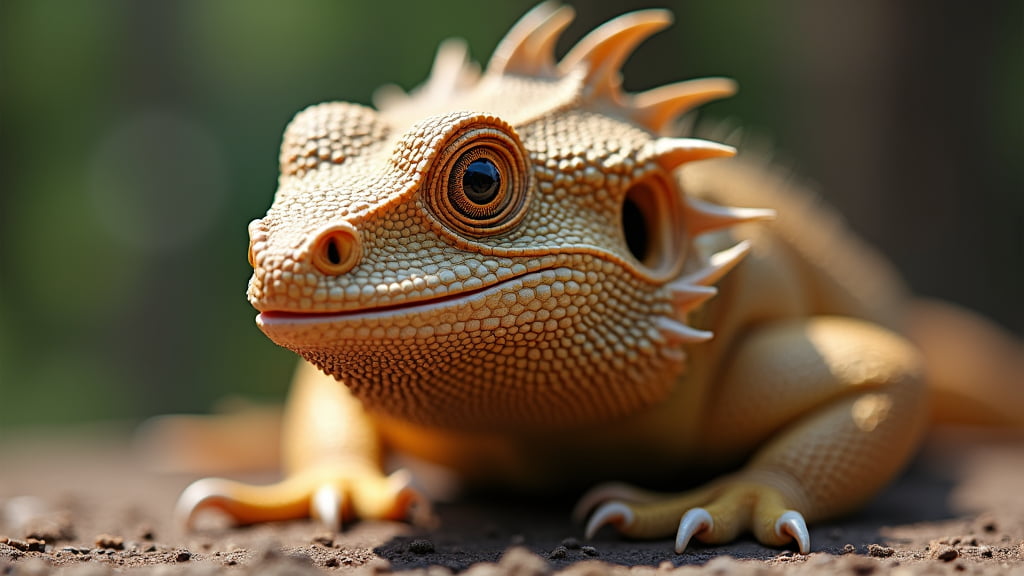Understanding Bearded Dragon Response to Environment
Have you ever wondered how bearded dragons respond to their environment? As a long-time owner of these fascinating reptiles, I can tell you that their reactions are as varied as they are intriguing. By observing their behaviour and making adjustments to their habitat, you can ensure that your bearded dragon lives a healthy and happy life.
The Importance of a Proper Environment
Creating an ideal environment for your bearded dragon is crucial for their overall well-being. These reptiles originate from the arid deserts of Australia, so their habitat needs to mimic this natural setting closely.
Temperature Control
Temperature plays a significant role in your bearded dragon’s response to their environment. They are ectothermic, meaning they rely on external heat sources to regulate their body temperature. If the temperature in their enclosure is too low, you’ll notice lethargy, sluggishness, and possibly even a lack of appetite. Conversely, if it’s too high, they may exhibit signs of stress such as glass surfing or trying to escape the enclosure.
Optimal Temperature Ranges:
- Basking Area: 38-42°C
- Cool Side: 22-26°C
Humidity Levels
While they come from dry environments, maintaining the right humidity is also essential. A humidity level of 30-40% is generally ideal. Too much humidity can lead to respiratory problems, while too low can cause skin shedding issues.
Tip from Experience: I use a digital hygrometer to monitor the humidity and make adjustments as needed. For instance, reducing water spillage and adding more ventilation can help manage excess humidity.
Signs of Comfort and Discomfort
Understanding your bearded dragon’s body language will help you ascertain whether they are comfortable or uncomfortable in their environment. Observing these cues can provide crucial information on necessary adjustments.
Signs of Comfort
When your bearded dragon is happy and healthy, you’ll notice:
- Active Movement: Exploring their enclosure, climbing on branches, and basking under the heat lamp.
- Regular Eating: Eating their diet of vegetables, insects, and sometimes fruits with enthusiasm.
- Bright Colours: Vibrant and healthy skin coloration.
- Curiosity: They’ll show interest in their surroundings and in you, often cocking their heads and following your movements.
Signs of Discomfort
On the other hand, signs of discomfort include:
- Darkening of the Beard: This is often a stress indicator.
- Glass Surfing: Scratching or rubbing against the glass to escape.
- Lethargy: Consistent inactivity and prolonged periods of sleep.
- Loss of Appetite: A sudden disinterest in food.
- Hissing or Puffing Up: Defensive behaviours indicating stress or fear.
Adjusting the Habitat
Knowing how to tweak various elements of their enclosure can vastly improve your bearded dragon’s quality of life.
Lighting
Proper lighting includes both UVB and heat lamps. UVB is critical for calcium absorption and bone health.
- UVB Light: Ensure you use a reputable brand and aim to replace the bulb every 6-12 months.
- Basking Light: Position this so it creates a gradient in the enclosure, allowing for thermoregulation.
Enrichment
Enrichment can help alleviate boredom and stress. Various decorations, such as hideouts, branches, and rocks, can make the environment stimulating.
Personal Tip: Switch out toy arrangements and add new elements periodically to keep your dragon engaged.
Diet Adjustments
Diet can also influence behaviour. Offer a balanced diet of leafy greens, vegetables, and properly gut-loaded insects.
- Feeding Frequency: Younger dragons may need daily feedings, while adults could be fed every second day.
- Calcium and Vitamin D3: Supplements are important to prevent metabolic bone disease.
Conclusion
Understanding your bearded dragon’s response to their environment is vital for providing optimal care. By closely monitoring temperature, humidity, and their behaviour, you can make informed adjustments to ensure they thrive. Should you observe any worrying signs or persistent issues, always consult with a veterinarian experienced in reptile care for professional advice.
For more in-depth guides on bearded dragon care, check out our other posts on bearded dragon feeding tips and how to set up a bearded dragon enclosure.
For additional products to enhance your bearded dragon’s habitat, visit our recommended product page on Amazon.
For troubleshooting various behavioural issues, you might find this guide on bearded dragon behaviour problems helpful.
Remember, a well-cared-for bearded dragon is a happy bearded dragon. Keep experimenting, observing, and adjusting, and your scaly friend will surely thrive!




